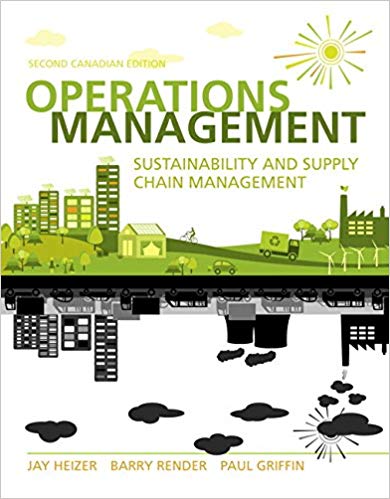For more than 75 years, Labrador Foundry Inc. (LFI) has manufactured wood stoves for home use. In
Question:
For more than 75 years, Labrador Foundry Inc. (LFI) has manufactured wood stoves for home use. In recent years, with increasing energy prices, president George Mathison has seen sales triple. This dramatic increase has made it difficult for George to maintain quality in all his wood stoves and related products.
Unlike other companies manufacturing wood stoves, LFI is in the business of making only stoves and stove-related products. Its major products are the Warmglo I, the Warmglo II, the Warmglo III, and the Warmglo IV. The Warmglo I is the smallest wood stove, with a heat output of 30 000 BTU, and the Warmglo IV is the largest, with a heat output of 60 000 BTU.
The Warmglo III outsells all other models by a wide margin. Its heat output and available accessories are ideal for the typical home. The Warmglo III also has a number of other outstanding features that make it one of the most attractive and heat efficient stoves on the market. These features, along with the accessories, have resulted in expanding sales and have prompted George to build a new factory to manufacture the Warmglo III model. An overview diagram of the factory is shown in Figure D.6 .
The new foundry uses the latest equipment, including a new Disamatic that helps in manufacturing stove parts. Regardless of new equipment or procedures, casting operations have remained basically unchanged for hundreds of years. To begin with, a wooden pattern is made for every cast-iron piece in the stove. The wooden pattern is an exact duplicate of the cast-iron piece that is to be manufactured. All LFI patterns are made by Precision Patterns Inc. and are stored in the pattern shop and maintenance room. Next, a specially formulated sand is oulded around the wooden pattern. There can be two or more sand moulds for each pattern. The sand is mixed and the moulds are made in the moulding room. When the wooden pattern is removed, the resulting sand moulds form a negative image of the desired casting. Next, moulds are transported to the casting room, where molten iron is poured into them and allowed to cool. When the iron has solidified, moulds are moved into the cleaning, grinding, and preparation room, where they are dumped into large vibrators that shake most of the sand from the casting. The rough castings are then subjected to both sandblasting to remove the rest of the sand and grinding to finish some of their surfaces. Castings are then painted with a special heat-resistant paint, assembled into workable stoves, and inspected for manufacturing defects that may have gone undetected. Finally, finished stoves are moved to storage and shipping, where they are packaged and transported to the appropriate locations.
At present, the pattern shop and the maintenance department are located in the same room. One large counter is used by both maintenance personnel, who store tools and parts (that are mainly used by the casting department); and sand moulders, who need various patterns for the moulding operation. Pete Nawler and Bob Dillman, who work behind the counter, can service a total of 10 people per hour (about five per hour each). On the average, four people from casting and three from moulding arrive at the counter each hour. People from moulding and casting departments arrive randomly, and to be served, they form a single line.
Pete and Bob have always had a policy of first come, first served. Because of the location of the pattern shop and maintenance department, it takes an average of three minutes for an individual from the casting department to walk to the pattern and maintenance room, and it takes about one minute for an individual to walk from the moulding department to the pattern and maintenance room.
After observing the operation of the pattern shop and maintenance room for several weeks, George decided to make some changes to the factory layout. An overview of these changes appears in Figure D.7 .
Separating the maintenance shop from the pattern shop would have a number of advantages. It would take people from the casting department only one minute instead of three to get to the new maintenance room. The time from moulding to the pattern shop would be unchanged. Using motion and time studies, George was also able to determine that improving the layout of the maintenance room would allow Bob to serve six people from the casting department per hour; improving the layout of the pattern department would allow Pete to serve seven people from the moulding shop per hour.
Discussion Questions
1. How much time would the new layout save?
2. If casting personnel were paid $9.50 per hour and moulding personnel were paid $11.75 per hour, how much could be saved per hour with the new factory layout?
3. Should George have made the change in layout?
Step by Step Answer:

Operations Management Sustainability and Supply Chain Management
ISBN: 978-0133764345
2nd Canadian edition
Authors: Jay Heizer, Barry Render, Paul Griffin





